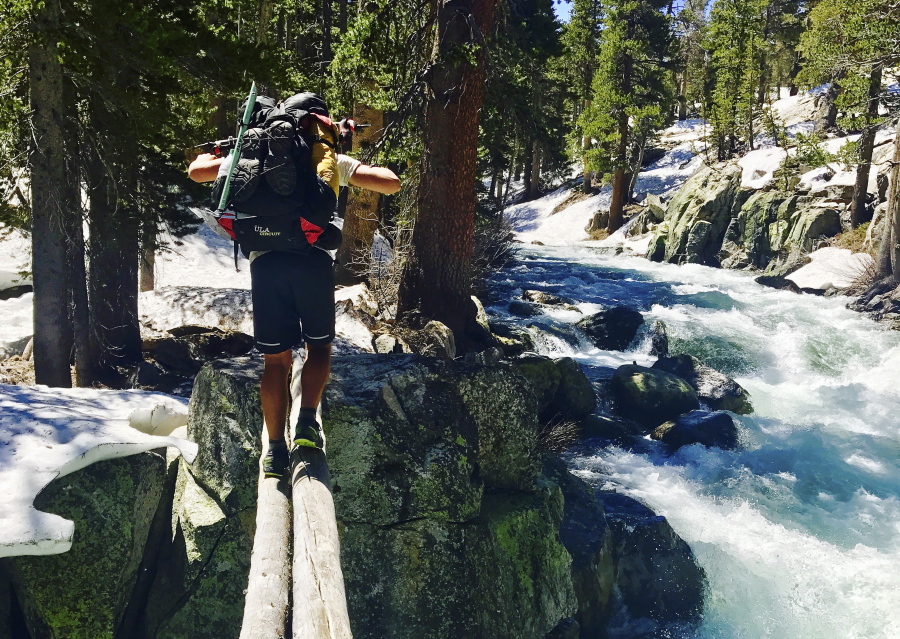LOS ANGELES — Anya Sellsted had scaled scary snow-covered passes and forded frightening rivers during her solo hike from Mexico to Canada when the hazards of California’s gargantuan winter finally caught up to her.
While crossing a partly submerged log in Yosemite National Park, Sellsted was sucked under the tree and down the rushing creek. She gasped for air as the weight of her 55-pound backpack pushed her under the frigid water.
No one was within miles as she was battered on rocks before grasping branches and saving herself.
Sellsted is one of several hikers who reported harrowing incidents tackling the 2,650-mile Pacific Crest Trail across this year’s massive snowpack, which has fed swift streams and turned the dream trip of a lifetime into a near-death nightmare for some.
Hikers have survived an avalanche, falls on snow and close calls in raging rivers. Most have retreated to lower ground and detoured the hazardous Sierra Nevada — the highest, most rugged section of the scenic trail running the length of California and through Oregon and Washington.
Hiking the trail is an arduous endurance test, but not particularly perilous. It has become more popular each year and draws more than 3,000 hikers from around the world trying to cover the entire length within six months, though fewer than a quarter finished last year.
Given the length and likelihood of snow in the Sierra and Cascades, most hikers start in the Southern California desert in early spring with the hope that snow will melt by the time they reach alpine elevations.
With hundreds of so-called thru-hikers entering the high Sierra early in the season, their experiences can serve as cautionary tales for others planning summer wilderness escapes. More than a dozen people have drowned in Sierra rivers at lower elevations, including one in Yosemite and three in Sequoia National Park, and rangers are warning hikers to think twice about crossing swift water.
Jack Haskel of the Pacific Crest Trail Association urged hikers two weeks ago on Facebook to let more snow melt, saying he was worried someone would die.
“It’s not really ready for us yet,” he said. “Conditions are more like mountaineering than backpacking.”
Brien Bower, 25, an experienced mountaineer from Seattle, completed the trail two years ago, and planned to turn around if he sensed danger.
He was climbing on skis near the top of 11,978-foot Glen Pass in Kings Canyon National Park in late May when he stopped to check the snow’s stability and triggered an avalanche. He hardly realized what happened before it carried him 400 feet — and off a 20-foot cliff — in about four seconds.
His hip was sore, but remarkably, wasn’t badly hurt. He left the mountains for a few days and returned farther north, where intimidating waters drove him from the trail again and he eventually quit after becoming sick.
“People are either continuing to get lucky or learning the skills on the job very fast,” he said.



